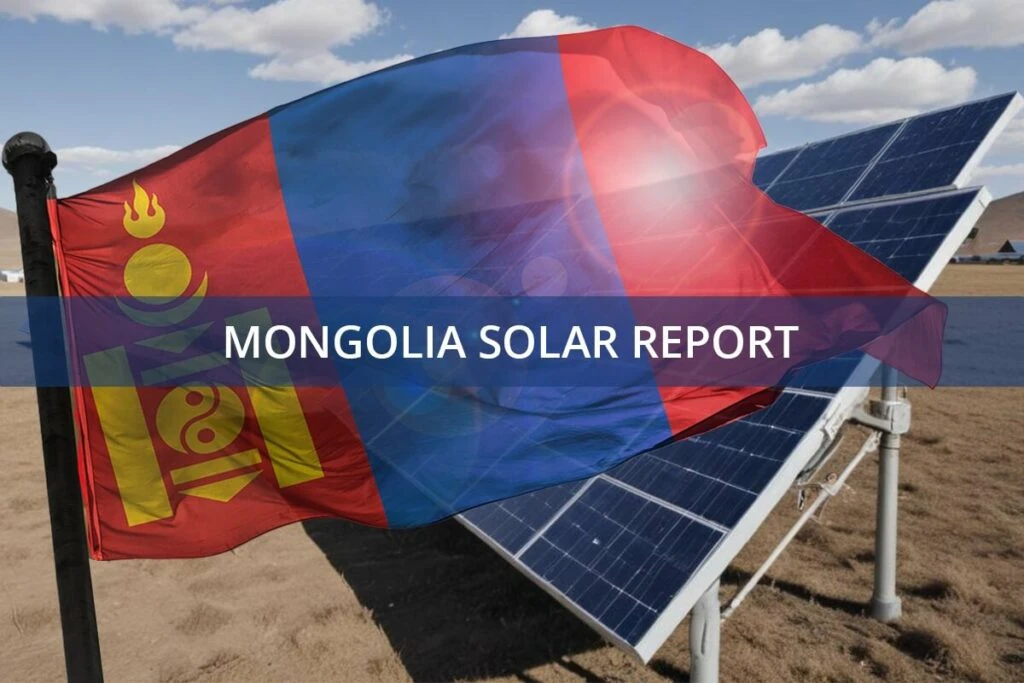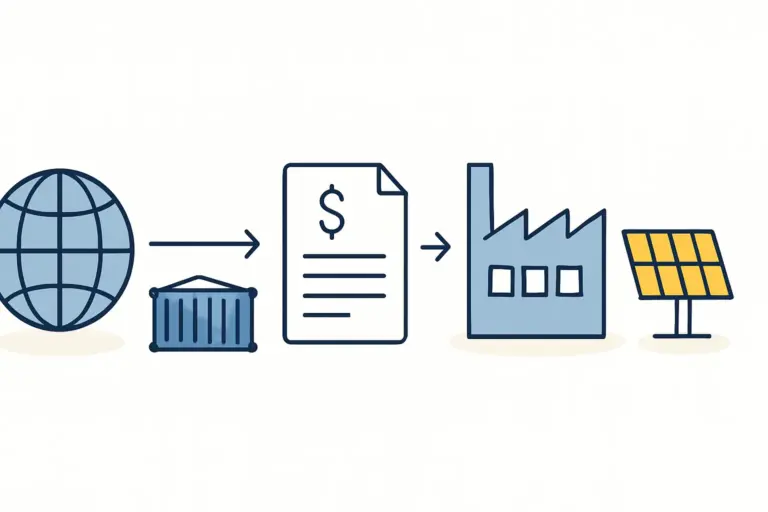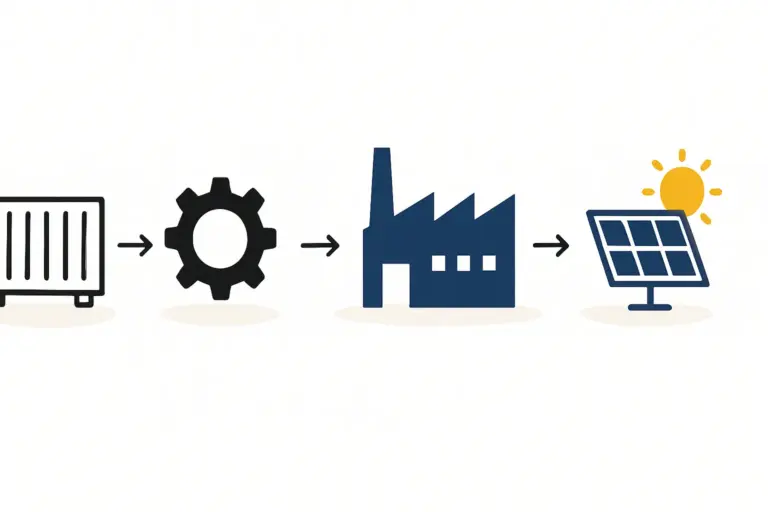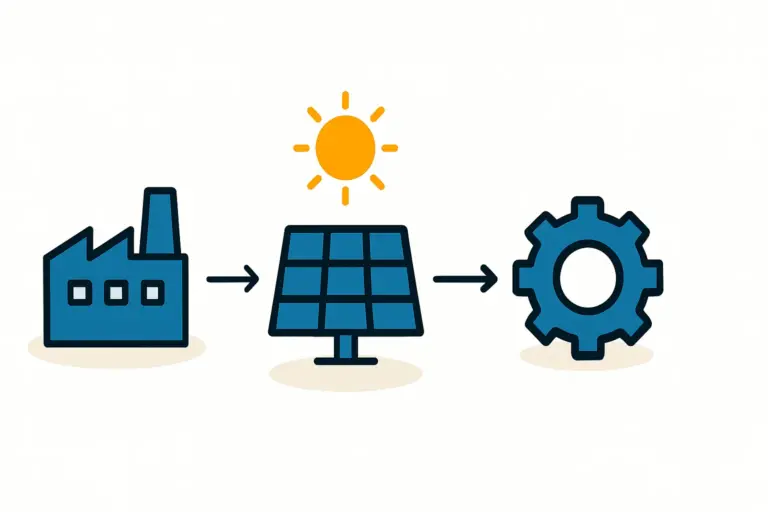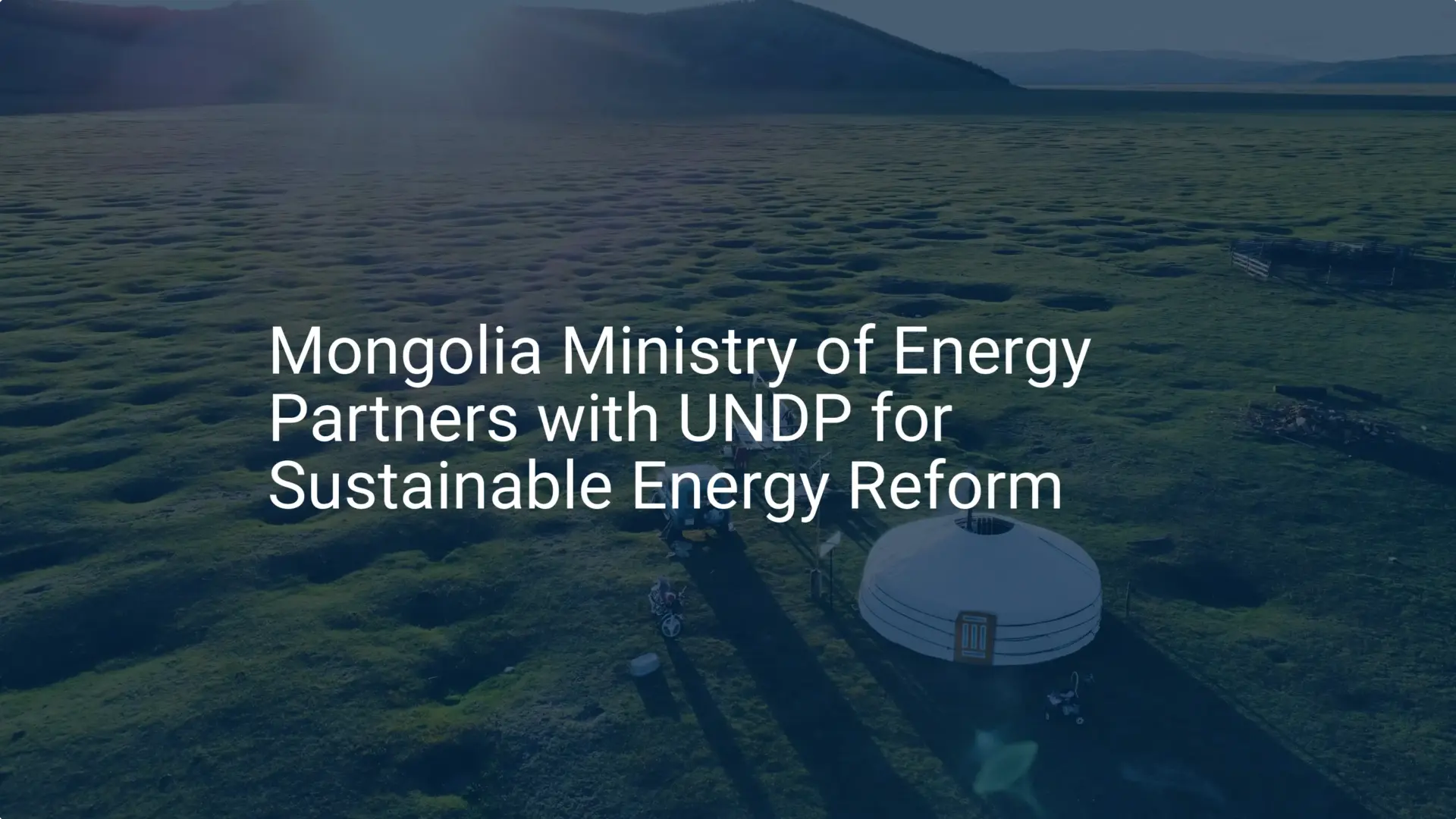Imagine a state-of-the-art solar farm in the Gobi Desert, a symbol of Mongolia’s commitment to energy independence. Built to harness a fraction of the region’s estimated 1.5 million GWh of solar energy per year, its power output begins to decline unexpectedly within just a few years. The cause isn’t a lack of sunlight, but the technology’s failure to withstand the climate’s relentless extremes.
This scenario highlights a critical challenge for entrepreneurs entering the solar industry in regions with severe weather. A standard solar module, designed for the moderate climates of Europe or North America, is simply not engineered to survive the immense thermal stress of a Mongolian year, where temperatures can swing from a frigid -40°C in winter to a blistering +40°C in summer.
This guide breaks down the technical adaptations required in both module design and production to ensure long-term reliability and protect such an investment.
The Challenge: Why Standard Solar Modules Fail in Extreme Temperatures
At the core of the problem lies a physical principle: thermal stress. When a solar module cycles between extreme cold and heat, its various components—glass, silicon cells, polymers, and metal—expand and contract. Because each material has a different rate of expansion, this constant movement creates immense internal forces.
Think of it like repeatedly bending a metal wire. At first, nothing seems to happen, but with enough cycles, the metal fatigues and eventually breaks. A solar module experiences a similar, though less visible, process every day and night. Over thousands of cycles, this stress manifests in critical failures:
- Microcracks: Invisible fractures form in the delicate silicon solar cells, reducing their efficiency and creating potential hotspots.
- Delamination: The layers of the module begin to separate, allowing moisture to seep in, which can cause short circuits and rapid degradation.
- Solder Bond Fatigue: The electrical connections between the cells and within the junction box weaken and break, disrupting the flow of electricity and rendering parts of the module useless.
For a solar manufacturing venture in Mongolia, addressing these failure points at the factory level isn’t just an option—it’s a fundamental requirement for creating a viable product.
Critical Component Selection for Climate Resilience
A durable solar module is the sum of its parts. For extreme climates, specifying premium, climate-appropriate materials is the first and most critical step.
The Encapsulant: Protecting the Solar Cells
The encapsulant is a thin polymer sheet (typically EVA – Ethylene Vinyl Acetate) that surrounds the solar cells, bonding them to the glass and backsheet while providing electrical insulation.
In a climate like Mongolia’s, standard EVA can become brittle at -40°C, increasing the risk of cell cracking under physical stress. Conversely, high summer temperatures and intense UV radiation can accelerate its degradation, leading to yellowing and delamination. The solution is to specify advanced encapsulants, such as high-quality, cross-linked EVA or POE (Polyolefin Elastomer), which maintain their flexibility at low temperatures and offer superior resistance to both heat and UV degradation.

The Backsheet: The Module’s First Line of Defense
The backsheet is the module’s outer protective layer, shielding it from moisture, UV exposure, and mechanical damage. A low-quality backsheet that cracks in extreme cold effectively exposes the module’s sensitive internal components to the elements, guaranteeing premature failure.
For Mongolian conditions, a robust, multi-layer backsheet (such as those based on PVDF – Polyvinylidene fluoride) is essential. These materials are proven to withstand wide thermal cycles and high UV loads without becoming brittle, ensuring the module remains sealed and protected for its entire service life.

The Junction Box and Solar Cells
The junction box houses the module’s electrical connections. The daily expansion and contraction place significant strain on its solder joints. Similarly, the metallic ribbons connecting the solar cells are under constant stress. Using high-quality, fatigue-resistant soldering materials and robust cell interconnection techniques is crucial to prevent electrical failures over the long term.
Modifying the Production Process for Enhanced Durability
Selecting the right materials is only half the battle. The manufacturing process itself must be precisely calibrated to create a truly resilient module, viewing every step through the lens of climate-specific adaptation.
Lamination: The Heart of Module Assembly
The lamination stage is where the module’s layers are fused together under heat and pressure to form a single, solid unit. This process is critical for long-term stability. When using high-performance materials like POE, the lamination cycle—including temperature, pressure, and duration—must be specifically optimized. Using a standard EVA lamination recipe for POE will result in improper bonding and guaranteed delamination in the field.
A successful turnkey solar module manufacturing line must account for this from the beginning, with a laminator capable of the precise process control these specialized materials require.
Curing and Quality Control
Following lamination, the module must be allowed to cure properly to ensure the chemical bonds in the encapsulant achieve maximum strength. Quality control becomes equally paramount. Implementing electroluminescence (EL) testing both before and after lamination is essential, for instance, to detect any microcracks that may have formed during the high-stress manufacturing steps.
Certification and Testing: Proving Reliability Beyond the Standard
Standard international certifications, such as IEC 61215 and IEC 61730, are the baseline for market entry. They establish that a module is safe and performs as specified under normal conditions. For a climate as demanding as Mongolia’s, however, these standard tests are insufficient.
The ‘Thermal Cycling Test,’ a key part of the IEC certification, typically subjects a module to 200 cycles between -40°C and +85°C. To adequately simulate the lifetime stress in Mongolia, manufacturers should commission extended tests of 400 or even 600 cycles. Passing these rigorous, extended tests provides powerful, objective proof that the module is truly engineered for the local environment.
Based on experience from J.v.G. turnkey projects in similarly demanding climates like Central Asia and Canada, specifying these extended tests is a crucial step toward de-risking a major solar investment.

Integrating Climate Adaptation into Your Business Plan
These necessary technical upgrades—premium materials, adjusted processes, and extended testing—will naturally add to the final cost of the module. While it may be tempting to save costs by using standard components, this approach is commercially unviable in the long run. The reputational damage and warranty costs associated with widespread field failures would far outweigh any initial savings.
Therefore, these adaptations must be factored into the financial projections from day one. A comprehensive Business Plan for a Solar Module Factory should treat these climate-specific requirements not as an added expense, but as a core element of the product’s value proposition and a key pillar of the project’s long-term bankability.
Frequently Asked Questions (FAQ)
What is the primary cause of solar module failure in cold climates?
The primary cause is thermal stress from the daily and seasonal expansion and contraction of the module’s different materials. This leads to mechanical failures like microcracks in the solar cells, delamination of the protective layers, and fatigue in the electrical solder joints.
Are these specialized modules significantly more expensive to produce?
There is a cost premium associated with higher-grade materials like POE encapsulants and high-performance backsheets. However, this increase in the bill of materials (BOM) is a small fraction of the module’s total cost. It’s a critical investment in product reliability and long-term project revenue—and far cheaper than the cost of future warranty claims and lost production.
Can a standard manufacturing line be adapted for these modules?
Yes, a well-designed manufacturing line can be adapted. The key is to ensure that critical equipment, particularly the solar laminator, has the flexibility and precision to handle the specific process parameters that advanced materials require. This involves precise control over temperature profiles and pressure sequences, along with enhanced quality control stations like EL testers.
How does the high altitude in Mongolia affect module production?
While temperature is the primary concern, Mongolia’s high average altitude means that solar modules are exposed to higher levels of ultraviolet (UV) radiation. This accelerates the degradation of polymers like the backsheet and encapsulant. This factor reinforces the necessity of selecting highly UV-stable materials to ensure a 25- to 30-year operational life.
Conclusion: Building for Longevity
Entering the solar module manufacturing market in a location like Mongolia presents a remarkable opportunity. Success, however, is not achieved by simply replicating standard production models. It requires a deeper engineering focus on creating a product specifically designed for the local environment.
By carefully selecting climate-resilient materials, precisely adapting the manufacturing process, and verifying durability through extended testing, an entrepreneur can build a reputation for quality and reliability. This approach transforms the region’s greatest environmental challenge—its extreme climate—into a powerful competitive advantage, laying the foundation for a successful and lasting solar manufacturing venture.

